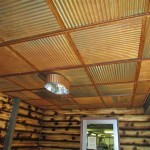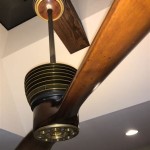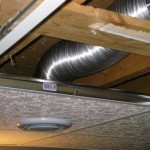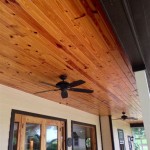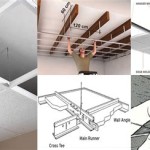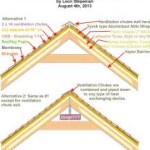What To Do With Drop Ceiling Tiles
Drop ceiling tiles, also known as suspended ceiling tiles, are a common component in many commercial and residential spaces. They offer several benefits, including concealing structural elements, improving acoustics, and providing easy access to wiring and plumbing. However, these tiles often require replacement due to damage, staining, or simply aesthetic updates. Disposing of or repurposing these tiles responsibly is crucial, considering their composition and potential environmental impact. This article outlines several options for dealing with drop ceiling tiles, ranging from proper disposal to creative reuse.
Understanding Drop Ceiling Tile Composition
Before exploring disposal or repurposing options, it is important to understand the materials used in drop ceiling tiles. The most common type is mineral fiber tile, which is typically composed of recycled paper, clay, and perlite. These materials are often combined with a binder to create a solid and durable tile. Another type of tile is fiberglass, which offers superior sound absorption and insulation properties. However, fiberglass tiles can pose health risks if not handled properly, as the fibers can irritate the skin, eyes, and respiratory system. Less common are metal and wood drop ceiling tiles, each with its own unique properties and disposal considerations.
The composition of the tile significantly influences its disposal method. Mineral fiber tiles, for instance, may be recyclable in some areas, while fiberglass tiles often require specialized disposal due to the potential hazards associated with the fibers. Identifying the type of tile is the first step in determining the most appropriate course of action.
Furthermore, some older tiles may contain asbestos, a known carcinogen. Asbestos was commonly used in building materials before its health risks were fully understood. If the building was constructed before the 1980s, it is crucial to have the tiles tested for asbestos before attempting any removal or disposal. Asbestos abatement requires specialized training and equipment to prevent the release of fibers into the air.
Responsible Disposal Methods
When drop ceiling tiles are no longer usable or suitable for repurposing, proper disposal is essential. The specific disposal method depends on the type of tile and local regulations. Improper disposal can lead to environmental contamination and potential health hazards.
One option is landfill disposal. However, sending large quantities of tiles to a landfill contributes to waste accumulation. Before resorting to this option, it is important to explore recycling possibilities. Some recycling facilities accept mineral fiber tiles, particularly those made from recycled materials. Contacting local recycling centers and waste management companies can help determine if this option is available.
If the tiles are damaged or contaminated, incineration may be considered. Incineration reduces the volume of waste and can generate energy. However, it also releases emissions into the atmosphere, so it is important to ensure that the incineration facility has appropriate pollution control equipment. This method is typically used for tiles that cannot be recycled or landfilled due to contamination or hazardous materials.
For tiles containing asbestos, specialized disposal is mandatory. Asbestos-containing materials must be handled and disposed of according to strict federal, state, and local regulations. This typically involves sealing the tiles in airtight containers and transporting them to a designated asbestos disposal site. Attempting to remove or dispose of asbestos-containing materials without proper training and equipment is illegal and extremely dangerous.
Prior to disposal, consider donating usable tiles to organizations such as Habitat for Humanity or other charities. These organizations often accept building materials in good condition and can put them to good use in their projects, diverting them from landfills.
Creative Repurposing Ideas
Instead of disposing of drop ceiling tiles, consider repurposing them for various creative projects. Repurposing reduces waste and gives the tiles a new life. The porous nature of some tiles, particularly mineral fiber tiles, makes them suitable for a variety of applications.
One potential use is as acoustic panels. Drop ceiling tiles are designed to absorb sound, making them effective at reducing noise levels in rooms. The tiles can be mounted on walls or ceilings to create custom acoustic panels. This is particularly useful in home theaters, recording studios, or offices where noise control is important.
Another idea is to use the tiles as a canvas for artwork. The flat, textured surface of the tiles provides an interesting medium for painting, drawing, or mixed media projects. The tiles can be painted with various designs or used as a backing for collages. This is a great way to personalize a space and create unique decorative elements.
Drop ceiling tiles can also be used for craft projects. They can be cut into various shapes and sizes and used to create decorative ornaments, coasters, or even small furniture pieces. The tiles can be painted, glued, or otherwise embellished to create custom designs. This is a fun and creative way to repurpose the tiles and add a personal touch to home décor.
In the garden, drop ceiling tiles can be used as weed barriers or as a base for raised garden beds. The tiles prevent weeds from growing and help retain moisture in the soil. They can also be used to create pathways in the garden. However, it is important to ensure that the tiles do not contain any harmful chemicals that could leach into the soil.
Repurposing tiles requires creativity and planning. Prior to any project, ensure the tiles are clean and free of dust or debris. It is also crucial to consider the tile's material composition to ensure suitability for the intended application. For example, avoid using fiberglass tiles in projects where direct skin contact is likely.
Considerations for Tile Removal and Handling
Removing drop ceiling tiles requires careful consideration to avoid damage to the tiles, the grid system, and the surrounding environment. It is important to use proper techniques and equipment to ensure a safe and efficient removal process.
Before starting the removal process, turn off the power to any fixtures located in the ceiling. This prevents electrical shock and ensures safety during the removal process. Wear appropriate personal protective equipment, including gloves, safety glasses, and a dust mask, to protect against dust and debris. For fiberglass tiles, a respirator may be necessary to prevent inhalation of fibers.
Gently lift the tiles from the grid system, taking care not to damage the edges. Start by tilting the tile slightly and then lifting it straight up. If the tiles are stuck, use a putty knife or similar tool to loosen them. Avoid bending or breaking the tiles, as this can release dust and debris.
Once the tiles are removed, inspect the grid system for any damage or corrosion. Repair or replace any damaged components to ensure the structural integrity of the ceiling. Clean the grid system with a damp cloth to remove any dust or debris.
Store the removed tiles in a safe and dry place until they can be disposed of or repurposed. Cover the tiles with plastic sheeting to protect them from dust and moisture. If the tiles contain asbestos, store them in sealed containers labeled according to regulations.
Proper handling of drop ceiling tiles is crucial to prevent damage and ensure safety. Avoid dropping or throwing the tiles, as this can cause them to break. Transport the tiles carefully, using a cart or other suitable equipment. Follow all safety precautions when handling and disposing of drop ceiling tiles.

How To Easily Update An Ugly Drop Ceiling

Drop Ceiling Tiles No Longer Need To Be Boring Transform Yours Today Decorative Inc

A Modern Take On Drop Ceilings Clark Aldine

A Drop Ceiling That Looks Better Than Drywall How To Install In Basement Diy

Spruce Up Those Suspended Ceilings With Head Turning Tiles O Donnell Bros Inc

Creative Drop Ceiling Ideas B4 And Afters

Creative Drop Ceiling Ideas B4 And Afters

Another Easy Way To Hide Your Ugly Drop Ceiling Home Projects Makeovers
How To Install Drop Ceilings Easy Guide Kanopi By Armstrong

Creative Drop Ceiling Ideas B4 And Afters
Related Posts

